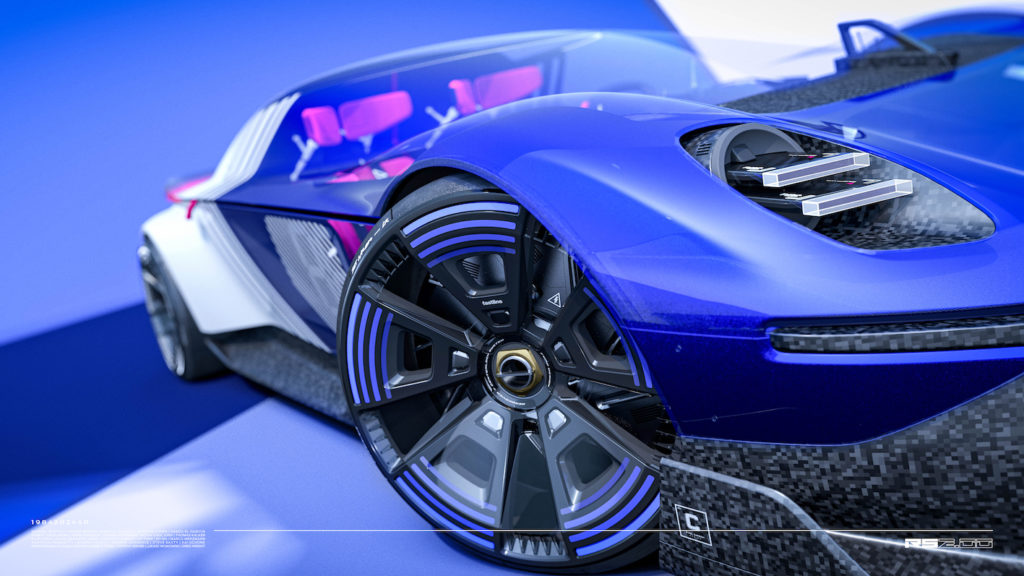
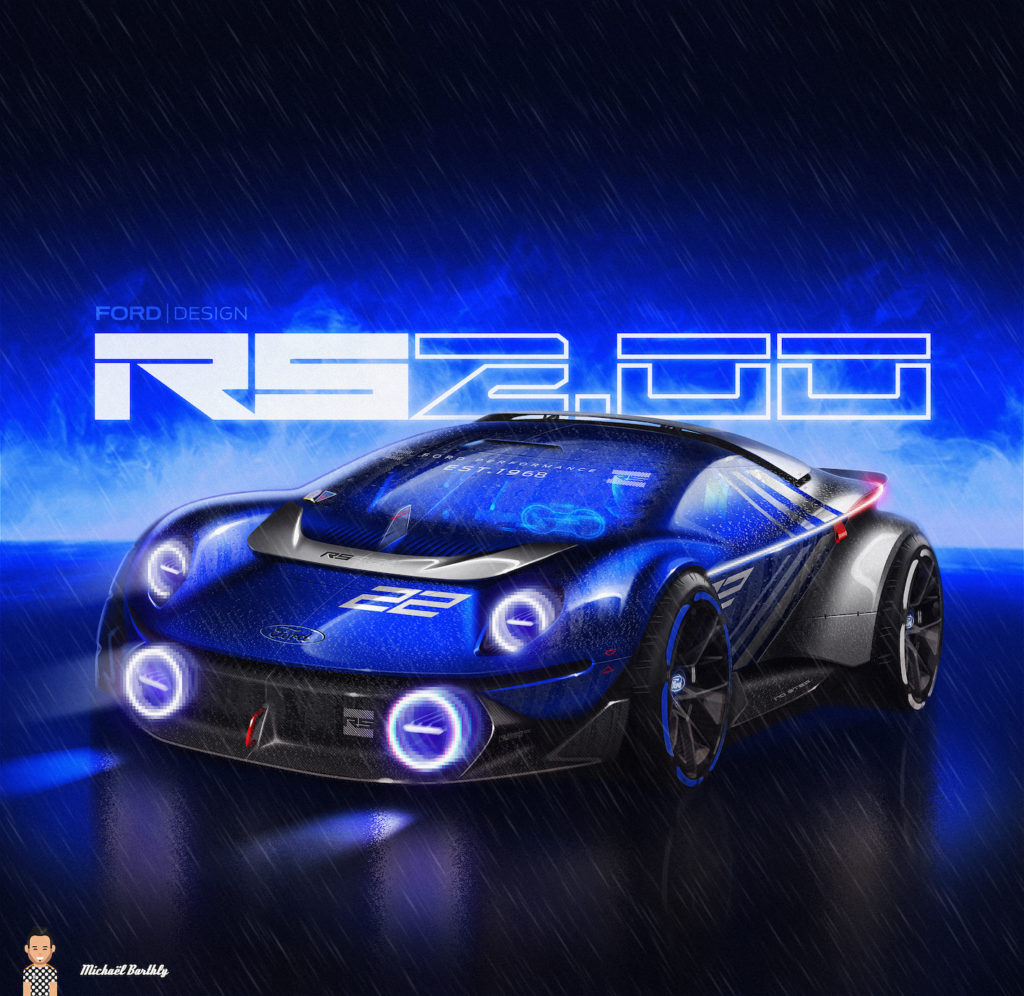
After the Renault 17 reinterpreted by designer Ora Ïto below ( https://www.ora-ito.com/studio/design/ see box) and the SM Concept by DS Automobiles(https://www.dsdesignstudio.paris/fr/ ), Ford is also reinventing one of its icons: the RS 200 from the 1984 World Rally Championship. However, the project is very different from those of Renault and DS Automobiles.
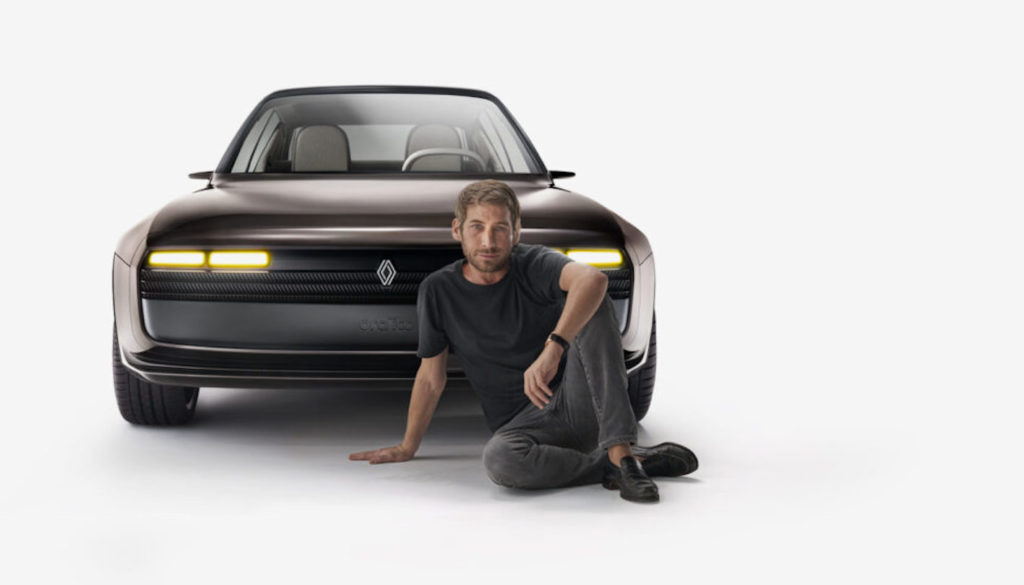
While Ford called on an exterior designer for its R17, the design team at DS Automobiles responded to a request from the boss that went against the grain of the design policy established up until then: ‘ no to restomod or retro design ’, as DS put it. At Ford, it was a small in-house team that developed the project for the 40th anniversary of the 1984 RS 200, below, and it was fully endorsed by the design department. That’s how great stories should happen, isn’t it?
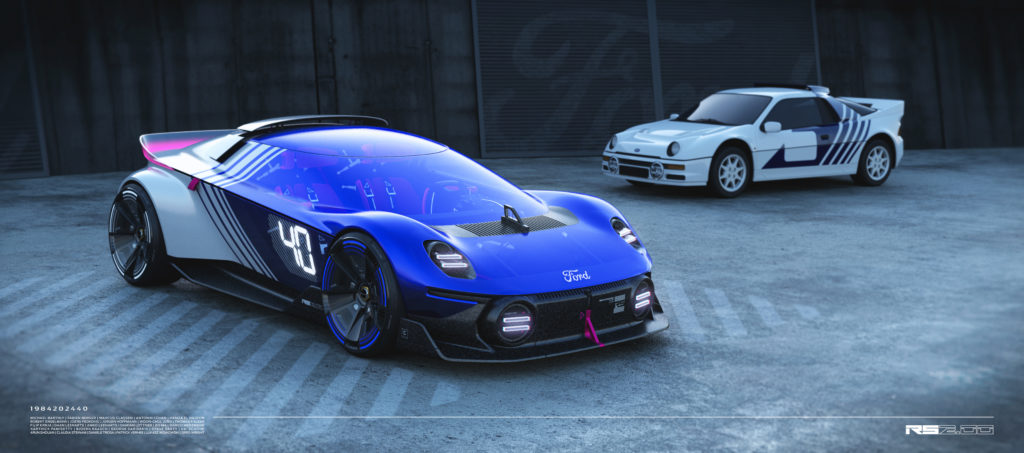
For those born at the turn of the century, the Ford RS 200 may not mean much. But for ‘old-timers’ born in the last millennium, it means a lot. It evokes a glorious period in sport: that of the World Rally Championship’s premier category, the ‘Group B’. A period when Lancia, Audi and Peugeot were at each other’s throats, with Ford and others also taking part in these spectacular battles.
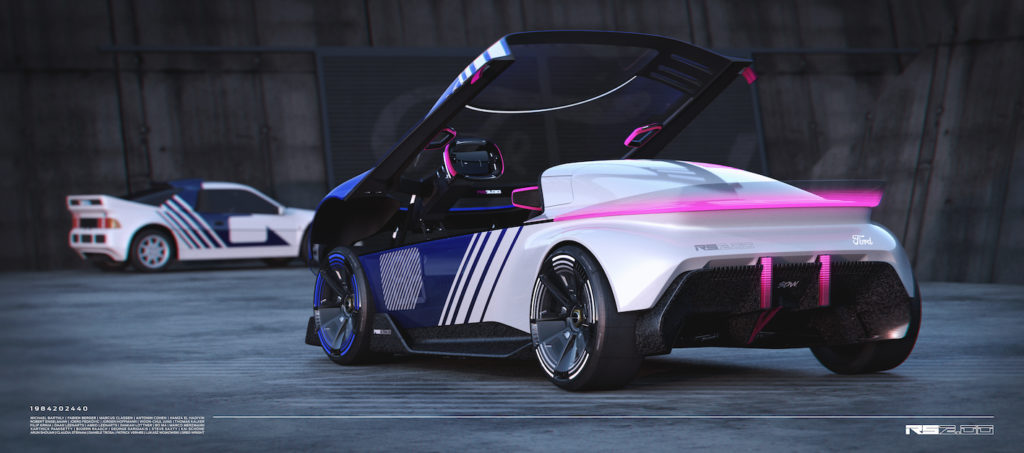
Let’s be honest, the RS 200 (200 for 200 produced, as required by the regulations at the time) didn’t win a world round, but Swedish driver Stig Blomqvist, world rally champion in 1984, did lead it to victory in a round of the European Championship in 1986. So the beast is celebrating its 40th birthday. It’s a kid!
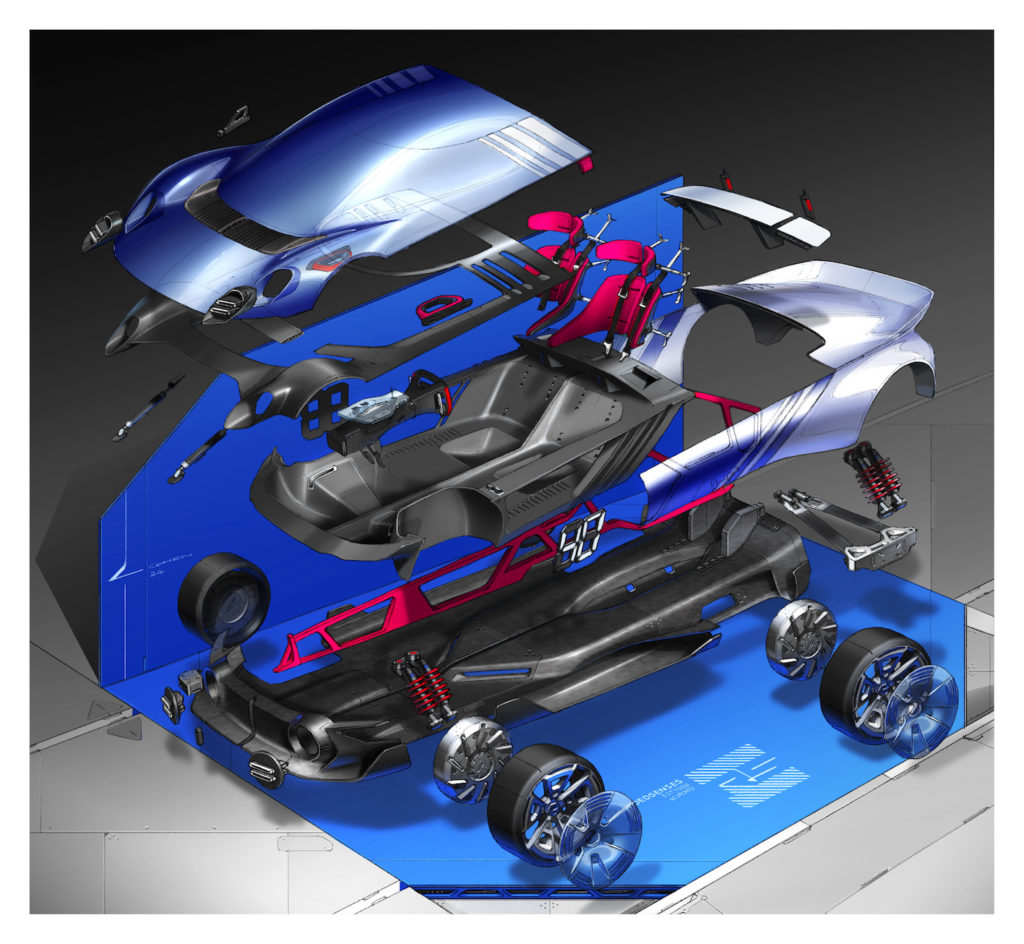
It has been given a new lease of life by a team of designers* who are as at home with video games as they are with their digital design tools. If design boss Amko Leenarts let them work on this project, and even go beyond the framework agreed beforehand, it’s because this passion is in the brand’s sporting DNA, and this kind of work boosts the spirit of creativity.
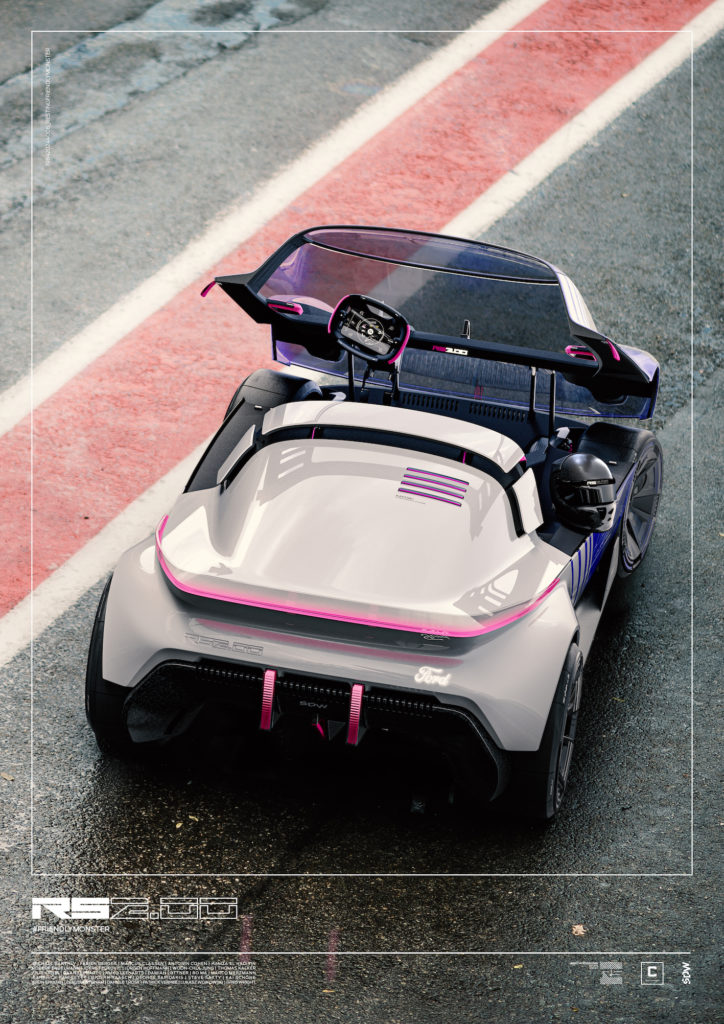
One of our colleagues editors, Steve Saxty, is behind this ground-breaking programme. He has written a series of books on secret Fords and, together with Leenarts, thought of producing this Ford RS2.00 to complement his ‘RS Special’ book. The designers took up the project with passion, but went much further than the few sketches dedicated to Steve Saxty’s book.
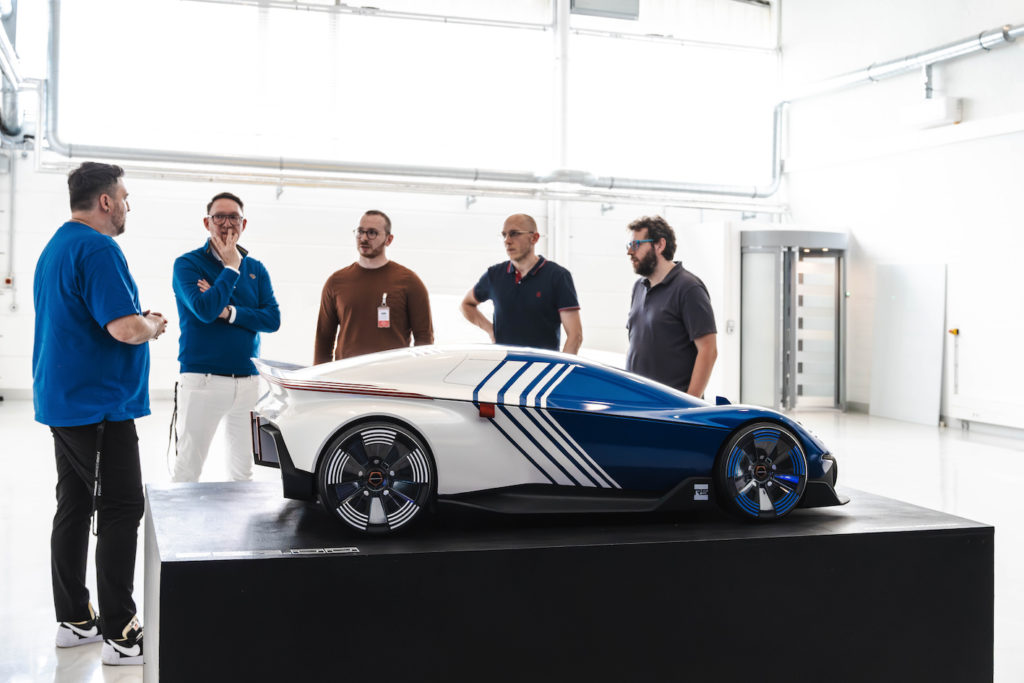
The RS2.00 exists in numerous digital files detailing both the exterior and interior design. The boss is quick to point out that this small team worked in their spare time to create a virtual 3D model. But the work was widely supported by the design department, and was given the name SDW (Skunk-Design-Works).
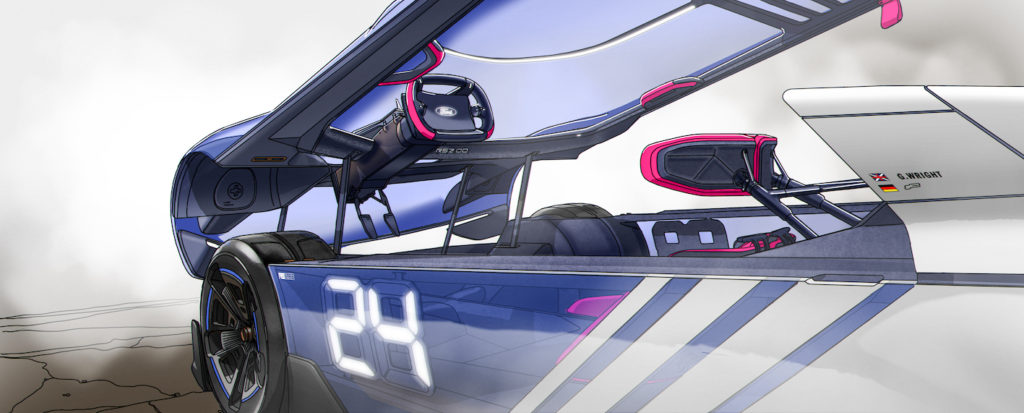
The advantage of such a parallel organisation is that it is the creators themselves who make the decisions. It’s as if the kid in the sweet shop was no longer guided in his choices by his castrating mother, but by his own conscience and greed! As a result, the final candy – sorry, the RS2.00 SDW – is the result of the exact vision of the commando team.
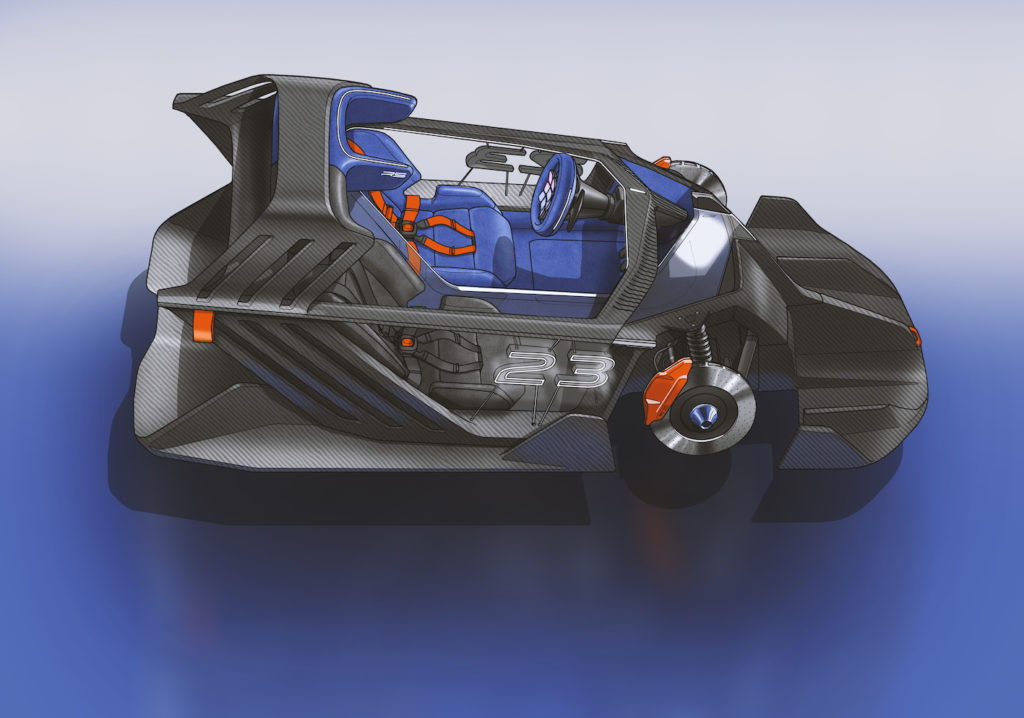
So it’s no great shame that this Ford tribute was conceived in this way. Quite the contrary, since it allowed the designers to experiment with new tools and software. And even though it was originally 100% digital, the Ford RS2.00 was still made on a reduced scale in Clay. The creative potential of the team is showcased. LIGNES/auto likes it when Clay puts up a fight…
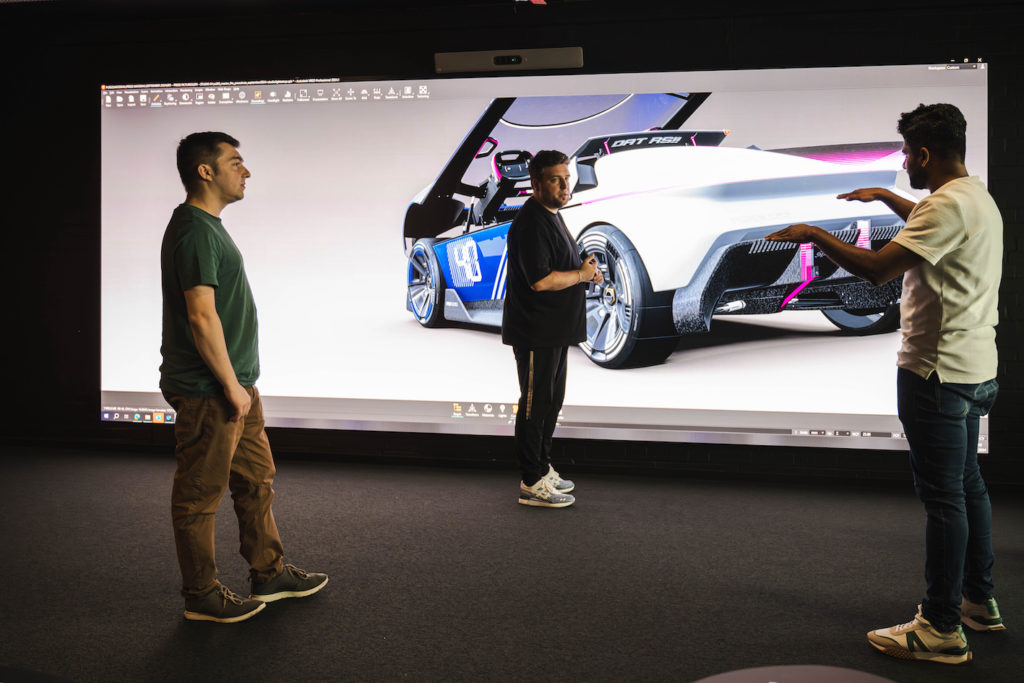
Did the work of the Renault design team and that of DS Automobiles come into their own with the R17 and the SM Tribute? In the first case, it was a case of riding the restomod wave and continuing the series of concepts designed by non-automotive designers. In the other case, with the SM, it was a question of responding to a pressing request from the brand’s boss and occupying the ground while awaiting the D85 project next month, we hope…
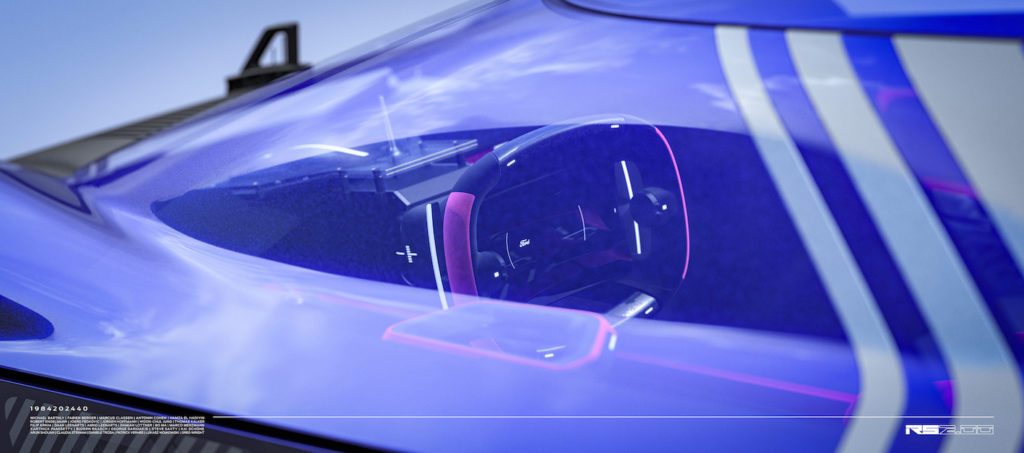
The strength of the Ford RS2.00, unlike – for the time being – its two French counterparts, is that it is designed to be transposed into the world of video games, where the manufacturer has various franchises. It therefore reaches a very different audience from the classic customer who clicks on the brand’s sales site or pushes open the doors of the dealership. It’s a bit like what F1 has experienced with the Netflix series, which has led to a significant rejuvenation of its fan base!
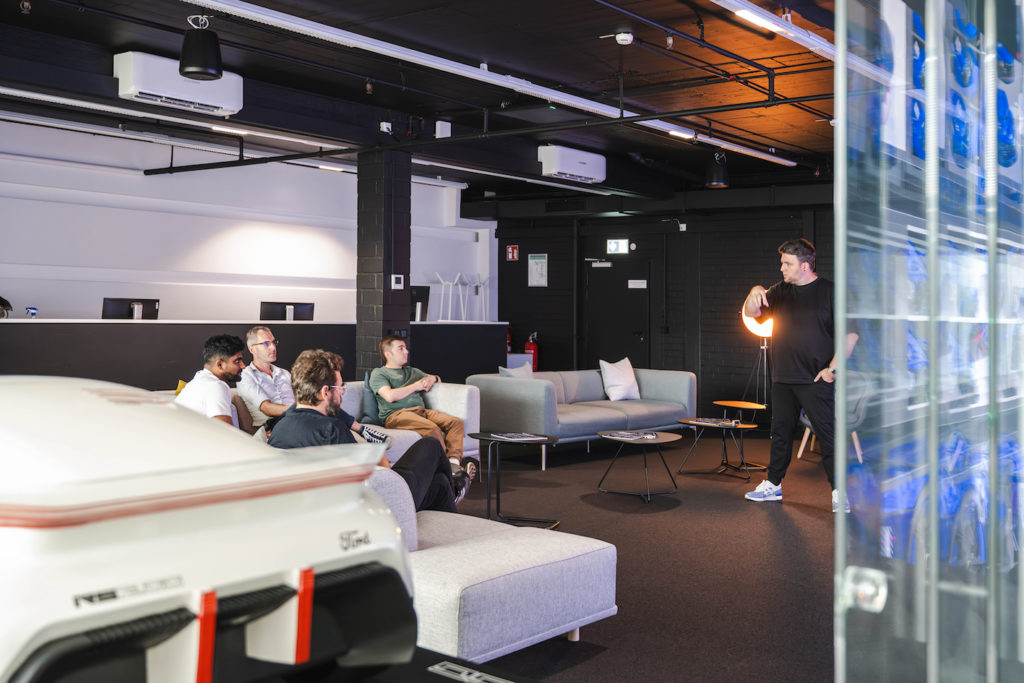
In terms of design, the team that created the RS2.00 has endeavoured to respect the request that was made to Ghia when it designed the RS 200 in 1984: a machine that was less brutal than those of the competition, but that was no less powerful. As a result, the RS2.00 looks accessible, avoiding over-aggressive bodywork in favour of an ‘ almost playful’ aesthetic.
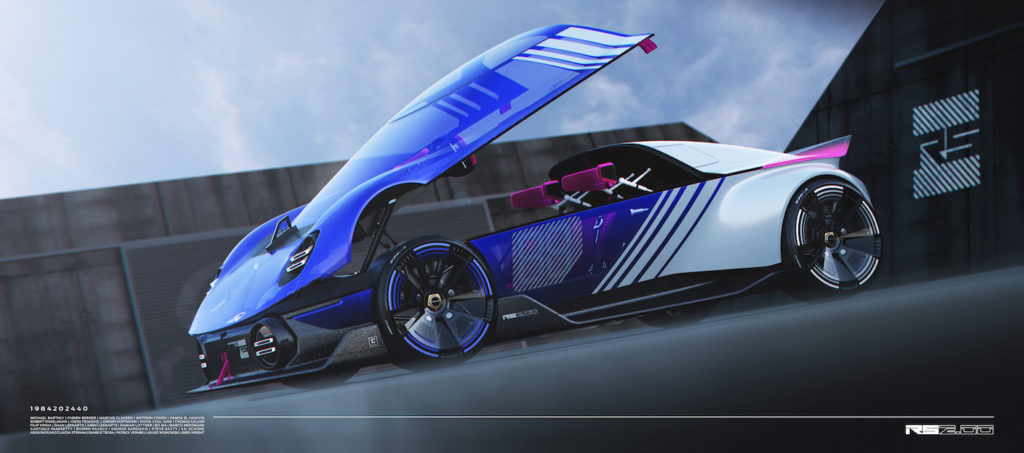
To create a visual connection between the passenger compartment, the driver and the road – or track – the designers opted for a total glass roof that does away with the windscreen pillars. In this respect, the Ford RS2.00 showcases a concept seen on many concept cars, starting below with the Bertone Chevrolet Testudo (n°1-1963) by Giugiaro, the Pininfarina Ferrari Modulo (n°2-1970) by Paolo Martin, the Pininfarina Citroën Osée (n°4-2001) by Nicolas Jardin, the Racoon Renault by Mark Walters (n°3-1993)…
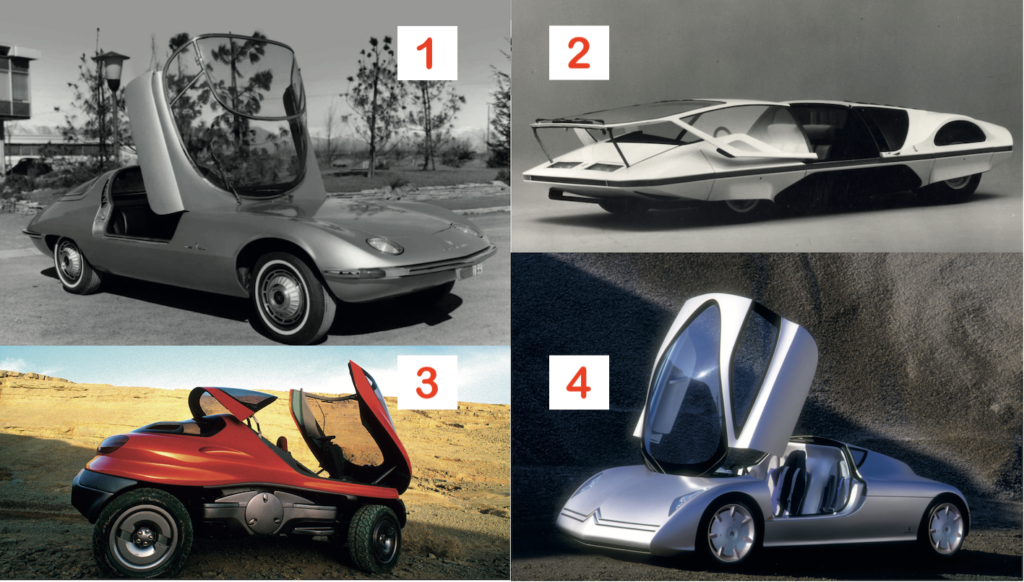
…and below, the Renault TréZor (n°5-2016) by Yann Jarsallé or, closer to home, the Colombe (n°6-2022) created by Thomas Busson – now an interior designer at Maserati – or the Enigma (n°7-2024) by Pininfarina.

This concept highlights a passenger compartment that is almost entirely visible from the outside. It’s a theme that LIGNES/auto has long championed, of a body that penetrates to the inside and vice versa, where the outside and inside become one. On board the Ford RS2.00, the seats are made of flexible parts that can be adapted to all body shapes, and their restraint system can be adapted to give different sensations by filtering or accentuating the car’s movements.
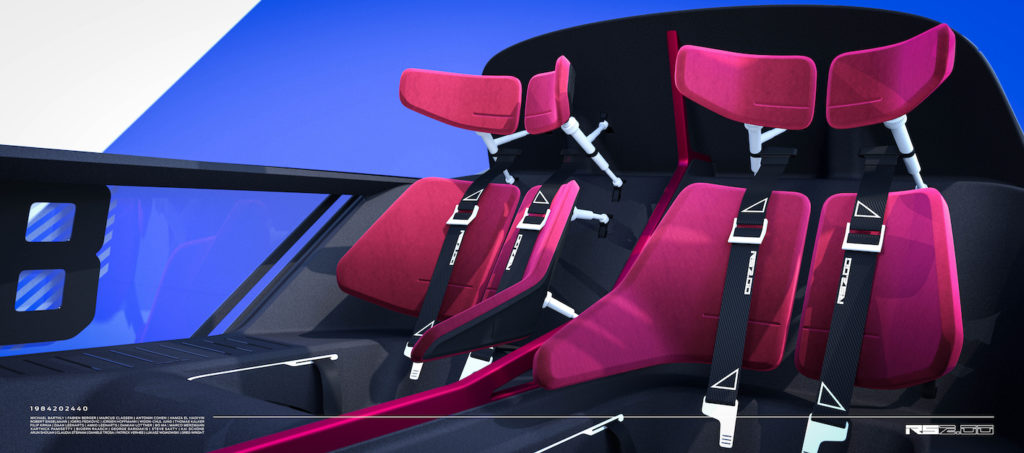
Combining the heritage of a 40-year-old sports model with a playful vision capable of attracting a younger clientele, the first iteration of the Ford RS2.00 (known as the Apex Hero) obviously deserved to go to scale 1, even as a one-off. In this respect, the Renault 17 and the SM Tribute have come of age… But it’s a tricky business, delighting old-timers like us while making young people want the brand. Here, it has been perfectly mastered.
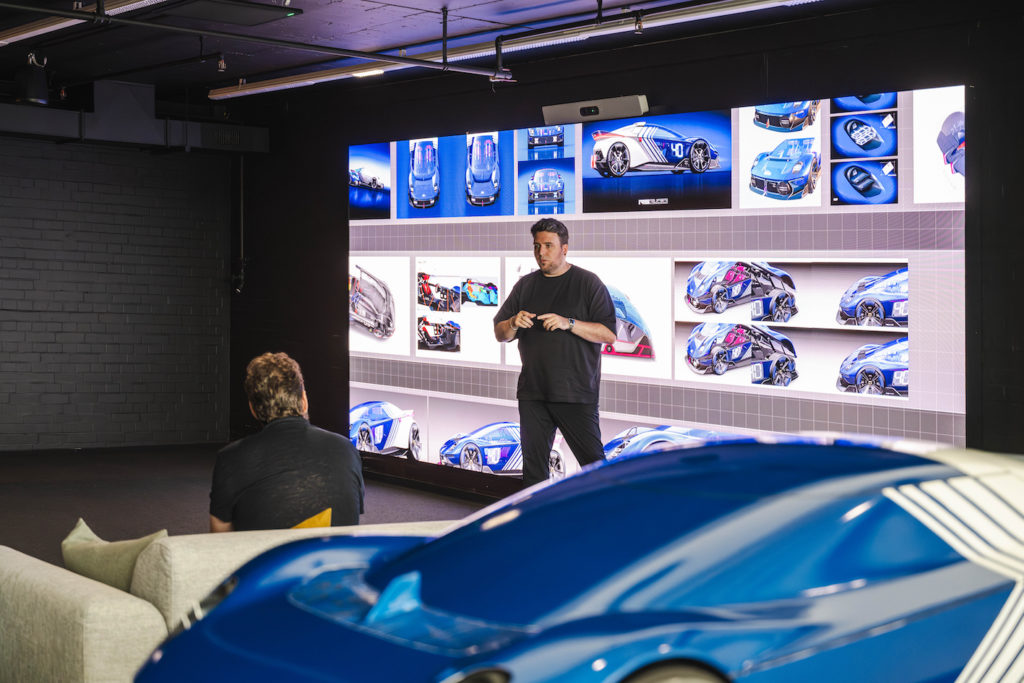
*The RS2.00 team
Michael Barthly, Fabien Berger, Marcus Classen, Antonin Cohen, Hamza El Hadiyin, Robert Engelmann, Joerg Fedkovic, Jürgen Hoffmann, Woon-Chul Jung, Thomas Kalker, Filip Krnja, Daan Leenarts, Amko Leenarts, Damian Lottner, Bo Ma, Marco Merzmann, Kartick Pamisetty, Bjoern Raasch, George Saridakis, Steve Staxy, Kai Schöne, Arun Shouan, Claudia Steinam, Daniele Trosa, Patrick Verhee, , Lukasz Wojkowski, Greg Wright
The LIGNES/auto favourite
This illustration below will probably look pretty to you, but that’s all. But for some of us, it takes us back to a magical time: that of the 1/12th scale TAMIYA models that we used to go and buy with our hearts beating – for a substantial sum of money – when we were teenagers!
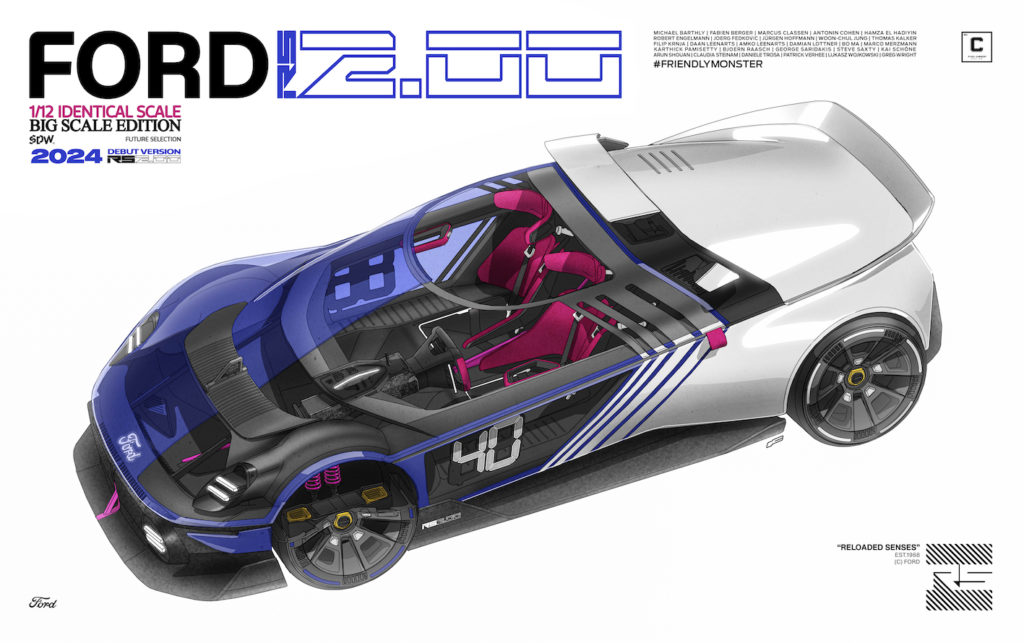
For those in the know, this illustration is directly inspired by those on the 1/12 scale model boxes produced by Japanese giant TAMIYA, and the nod is not insignificant: it shows that the design team, young and no doubt not necessarily addicted to the tedious assembly of these models with their hundreds of plastic parts, has nevertheless created this connection with a public that is, let’s say, a little older. As between the RS200 of 1984 and the RS2.00 of 2024. It’s not just a detail, it’s a seductive approach.
BONUS: When Ora Ito immersed himself in Citroën, not Renault
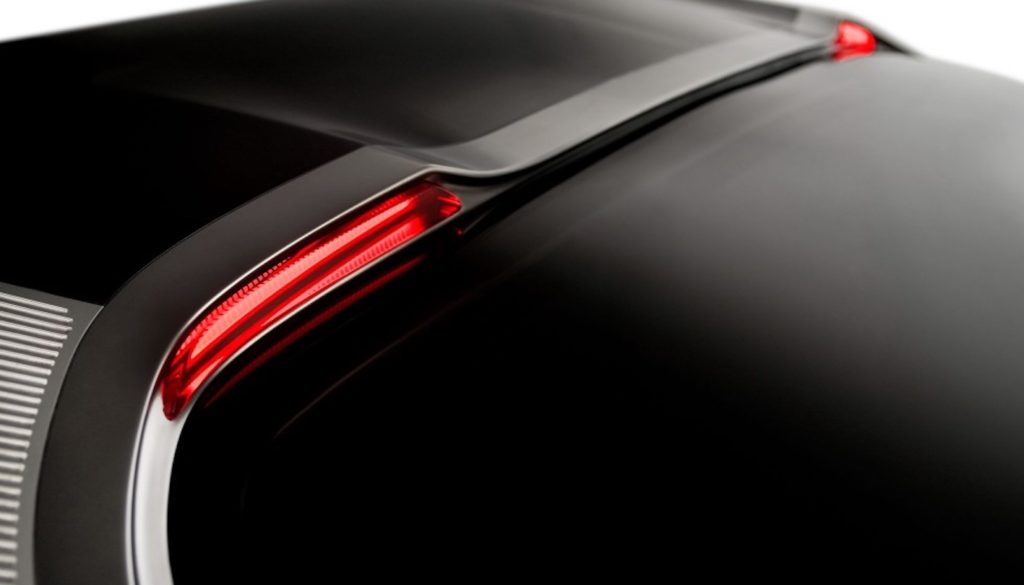
In 2011, Ora Ïto created the UFO sculpture, which is part of the ‘genetic transformations’ stemming from his artistic vision. The designer explains that it is ‘based on the future of transport, mixed with one of the most famous cars in the world, the Citroën DS. UFO combines the dream with the formal, the future with technology.‘

Ora Ïto explained in 2011 that ’the idea of working with several entities allows all the genetic transformations to spread a universal message to the automotive industry, through artistic vision and new directions never before explored‘ The sculpture measures 36 x 30 cm and height of 11 cm.

